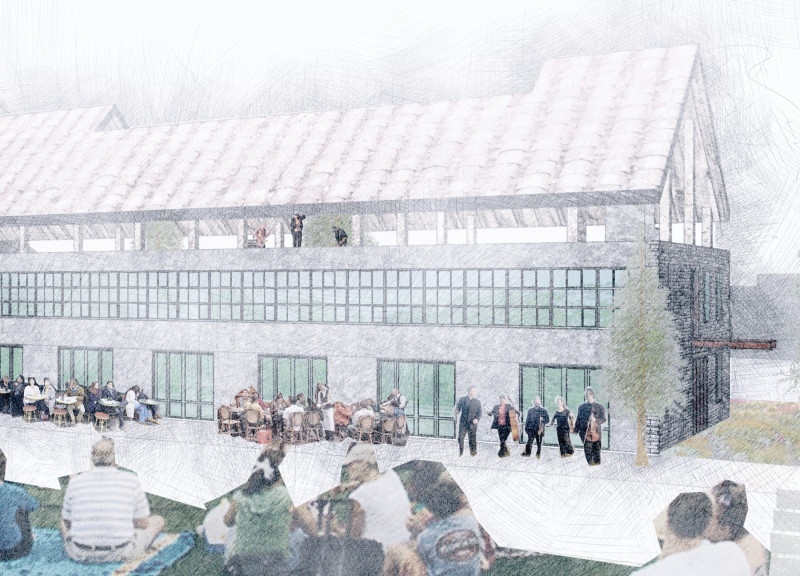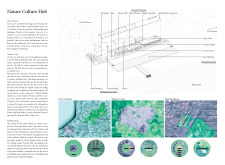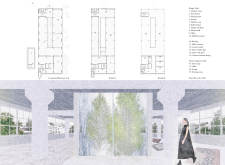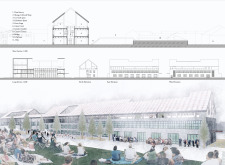5 key facts about this project
At its core, the Nature Culture Hub represents a new paradigm in urban architecture where nature and culture coexist and thrive. It functions as a cultural center that includes exhibition spaces, a music museum, a theater hall, and creative terraces meant for social gatherings and artistic expressions. These spaces are strategically designed to accommodate community activities, workshops, and performances, thereby promoting collaboration and cultural engagement among residents and visitors alike.
One of the most notable aspects of the project is its spatial organization. The layout is effectively divided into distinct functional zones, each serving a unique purpose while maintaining a cohesive overall design. The inclusion of social housing and artist residences reflects a commitment to providing affordable living options for creatives, encouraging a vibrant community of artists to engage with the hub's offerings. This thoughtful integration of residential and cultural functions reinforces the project’s goal of establishing a cultural node that benefits both local residents and tourists.
The architectural design utilizes a range of materials that are local and sustainable. Wood, a prevalent material, is employed for structural elements and finishes, drawing inspiration from the region’s traditional buildings while contributing to the warmth and accessibility of the spaces. Extensive use of glass throughout the project serves to enhance visual connections to the natural surroundings, flooding interiors with natural light and creating a sense of openness that blurs the line between indoor and outdoor spaces. Concrete is also incorporated for its durability, providing a solid framework for the innovative architectural forms that define the hub.
A defining feature of the Nature Culture Hub is its distinctive roof design, characterized by its unique shape and vibrant color. Functioning as both a landmark and a protective element, this roof integrates environmentally friendly systems such as rainwater harvesting, demonstrating a commitment to sustainable practices. The roof not only serves practical functions but also adds to the aesthetic identity of the structure, making it a memorable landmark in Cesis.
The landscaping surrounding the building further enhances the project's emphasis on ecological integration. It includes biodiverse gardens, open areas for community events, and spaces designed for relaxation and social interaction. These green features not only provide visual relief and recreational opportunities but also serve educational purposes, informing the public about local ecology and sustainability practices. The design encourages visitors and locals to interact with nature, supporting mental well-being and community bonding.
Unique design approaches evident in the Nature Culture Hub include the deliberate consideration of how architecture influences social interaction and community engagement. The layout encourages informal encounters and fosters a sense of ownership among users. By prioritizing open spaces, the design invites community members to take part in daily activities, thereby enhancing their connection to both the space and each other.
The Nature Culture Hub stands as an example of how innovative architectural design can cultivate a dialogue between urban environments and their natural counterparts. It embodies an approach that balances functional needs with aesthetic and ecological considerations. By bringing together diverse uses in a single architectural expression, this project opens up opportunities for artistic collaboration while nurturing a thriving community.
For those interested in delving deeper into the details of this architectural endeavor, exploring the architectural plans, sections, designs, and ideas presented within the project will provide a richer understanding of how the Nature Culture Hub seeks to redefine urban architectural paradigms. This initiative is not only about building spaces but about shaping experiences that resonate with culture and nature, creating a welcoming environment for current and future generations to enjoy.


























